If you’ve ever worked in – or for – a large organization, chances are you’ve experienced that eternal “healthy tension” between corporate communications and division or subsidiary communications.
You know what I’m talking about. That last-minute request from corporate to drop everything you’re doing and prepare something for a CEO visit. That division call telling you your corporate message won’t fly in the division because it’s at odds with their five priority messages.
Whether your communications function is centralized, decentralized or some hybrid version, the perennial question inevitably is, “How can we address a corporate and division communications agenda without bloodshed?”
I’ve often taken refuge in the phrase “healthy tension” to describe that relationship. It signals that both corporate and division agendas are important, and at the same time connotes that those agendas are not always in harmony.
But it doesn’t mean that we communicators shouldn’t stop trying to get better alignment. And it doesn’t mean there aren’t a few ideas that can help. I thought I’d offer a few ideas that have helped me — and my clients — and would invite you to share some that have worked for you.
Talk. Yes, you’re probably rolling your eyes, but it’s amazing to me how often I discover that Corporate and Division/subsidiary communicators plan and execute independently – as in, they’ve never talked about what common ground might exist between both/all camps. The first critical need is a shared set of message platforms. And the time to slog through that messaging is not in the middle of a project or crisis. Corporate and division/subsidiary teams should review a shared set of messages every year as they go through planning, and re-visit those messages at least once or twice a year. As “home base” for safe messaging, it can make drafting and approvals far more efficient, too.
Get to the common ground. When corporate and division/subsidiary communicators connect, chances are good that they’ll find common stakeholders that everybody wants to engage. Whether it’s a corporate reputation issue that enhances the needs of both, or a marketing initiative that improves everybody’s bottom line, when you map out the stakeholders and start thinking through messaging, some big things can happen. The key is to plan together.
Measure it, and it’ll get done. We’ve all heard that one, but when corporate and division communicators – and their respective executive teams — believe that a shared communication agenda can drive results for both, then there’s nothing like a measureable goal to galvanize focus and energy around a shared goal. It’s really important for both communications/functional leadership AND senior executive leadership to agree to messaging and measurement as the foundation for setting shared goals.
Start small. In organizations with no long (or strong) history of integrated communications planning and executive between corporate and division communications, even small steps can help pave the way for better future results. It can be using a few simple sentences or phrases, or using consistent anecdotes to illustrate key business priorities. But even starting with something this simple – and importantly, recognizing, rewarding and reinforcing that behavior – can help you build something much bigger for the future.
Change perspectives. Communications professionals who haven’t worked in both Corporate and Division/subsidiary roles can never fully understand the pressures on both sides until they’ve “walked a mile” in someone else’s shoes. Rotating people in and out of corporate and division roles, or providing temporary work experiences in the “other” environment, can work wonders in delivering a new perspective that helps everyone appreciate the different environmental pressures, and prompt much more flexibility for future negotiations. Try it.
Those are some starter ideas. What would you add?



2 Responses